A Daily News EXCLUSIVE BY KENNETH LOVETT - January 22, 2009
ALBANY - Officials will release a long-awaited report on Troopergate on Thursday, but sources said it ignores a key question - whether state agencies protected ex-Gov. Eliot Spitzer in the scandal. "It's a disgrace," said a source with knowledge of the report. "It's a joke, but the whole thing has been laughable."
The state Investigation Commission report reviewed the myriad investigations into the Troopergate mess: the Albany district attorney's office, the state Commission on Public Integrity and the state inspector general's office. All the agencies probed whether Spitzer and his top aides misused state police to smear a political rival, then-Senate Majority Leader Joseph Bruno. The commission also interviewed members of the state police and the governor's office and reviewed "thousands of documents" related to the probes. Regardless, the report is said to read like a summation of news accounts.
The report, according to sources, does not address:
- Whether Herbert Teitelbaum, executive director of the Public Integrity Commission and a Spitzer friend, leaked information to the governor's aides through a third party.
- Why then-Inspector General Kristine Hamann, who was appointed by Spitzer, suddenly aborted her probe and simply signed off on findings by the attorney general's office.
- Why Albany District Attorney David Soares did not place anyone under oath when he first reviewed and dismissed the matter. And why Soares came out with a more critical second report only after Spitzer left office, stating that some of Spitzer's aides may have violated the law. Instead, the investigation committee report finds that the three agencies had competing interests and "lacked sufficient jurisdiction to conduct a thorough investigation into all of the issues of Troopergate." And it calls for merging the inspector general's office and the Public Integrity Commission into the commission itself. Doing so "will create a single investigatory agency, promoting efficiency, providing cost savings and helping to restore public confidence," commission chairman Alfred Lerner said in a draft press release obtained by the Daily News. Currently, there are six commissioners, two each appointed by the governor, Senate majority leader and Assembly speaker. klovett@nydailynews.com
The state Investigation Commission report reviewed the myriad investigations into the Troopergate mess: the Albany district attorney's office, the state Commission on Public Integrity and the state inspector general's office. All the agencies probed whether Spitzer and his top aides misused state police to smear a political rival, then-Senate Majority Leader Joseph Bruno. The commission also interviewed members of the state police and the governor's office and reviewed "thousands of documents" related to the probes. Regardless, the report is said to read like a summation of news accounts.
The report, according to sources, does not address:
- Whether Herbert Teitelbaum, executive director of the Public Integrity Commission and a Spitzer friend, leaked information to the governor's aides through a third party.
- Why then-Inspector General Kristine Hamann, who was appointed by Spitzer, suddenly aborted her probe and simply signed off on findings by the attorney general's office.
- Why Albany District Attorney David Soares did not place anyone under oath when he first reviewed and dismissed the matter. And why Soares came out with a more critical second report only after Spitzer left office, stating that some of Spitzer's aides may have violated the law. Instead, the investigation committee report finds that the three agencies had competing interests and "lacked sufficient jurisdiction to conduct a thorough investigation into all of the issues of Troopergate." And it calls for merging the inspector general's office and the Public Integrity Commission into the commission itself. Doing so "will create a single investigatory agency, promoting efficiency, providing cost savings and helping to restore public confidence," commission chairman Alfred Lerner said in a draft press release obtained by the Daily News. Currently, there are six commissioners, two each appointed by the governor, Senate majority leader and Assembly speaker. klovett@nydailynews.com





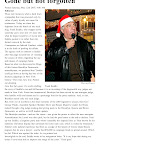

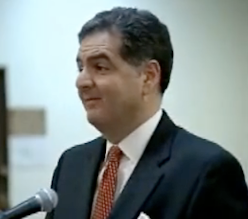
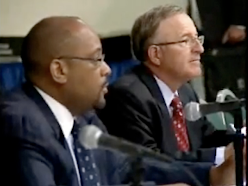
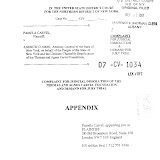


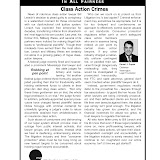

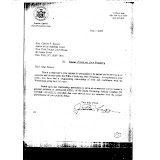
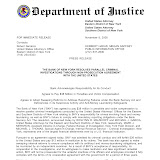
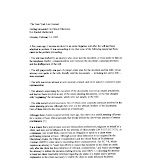

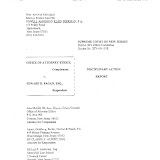
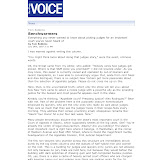

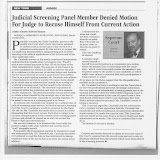



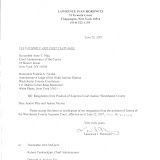
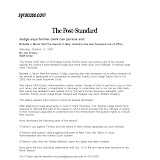
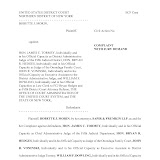

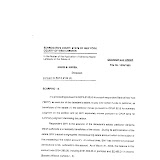
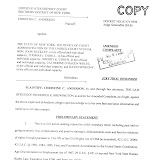
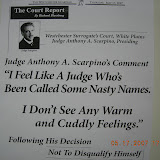
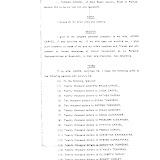
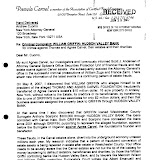
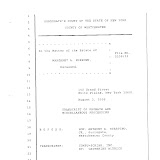
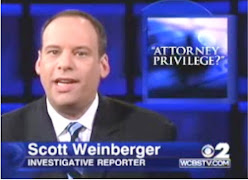
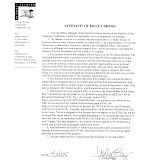

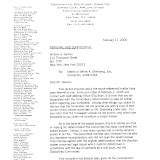
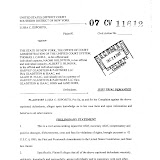
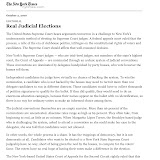
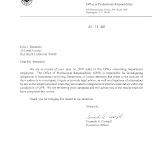
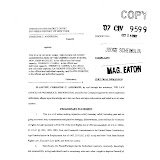
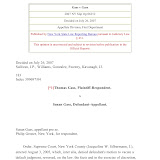
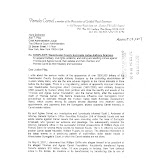

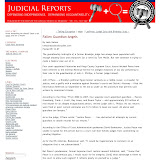
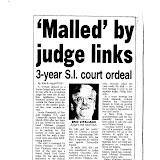

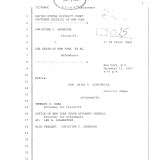
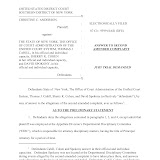
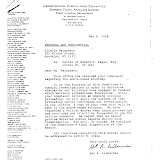
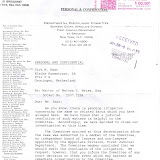
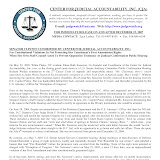


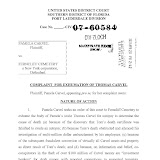
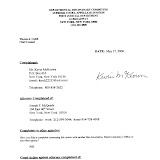
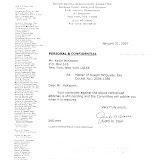
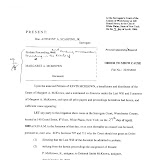
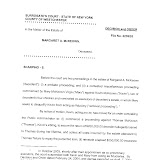
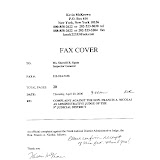

10 comments:
Of course all state agencies covered for Spitzer...no question in my mind.
In the preliminary stages of my filing a federal action against OCA, I contacted various state agencies to assist in some aspects of my case...The Dept of Labor, Workers Compensation, the State Insurance fund, the State Dept. of Corrections The OCA'S Oig..etc. and they all protected OCA, even if they compromised any and all ethics or laws governing them and this state.
How could a state operated Inspector General's Office ever instill or restore public confidence in anything NY state related.
My experience with the OIG for the OCA included this behavior:
1) I requested an investigation into OCA'S discriminatory and retaliation practices against me dating back some years...and the OIG turns it into an investigation "against me"..with the atty for the OIG... ..Elizabeth Candreva Esq. soliciting negative information from the very women that I accused of years of hostile abuse.
2)They made a private investigation very, very public..to humiliate and denegrate me even more..with Administrative Judge Sharon Townsend participating in soliciting information and memos to be written against me by the women I charged!
3)I was terminated way before they had finished gathering all their false information, statements and memos..after 30 yrs of excellent work evaluations written by them.. and oh yes..I participated in the termination of Townsend's colleague judge from Family Court back in 1993.
4)Jan Plumadore then denied me the final decision, which I was supposed to receive, so I could appeal...so said CSEA... the union who worked in collusion with OCA so they would not have to spend any money defending a discrimination case..takes away from the parties, cars and drinks they could have, when not negotiating with their sister in corruption..OCA.
4) Finally OCA denied the results also, relative to federal court depositions...only complying after 4 yrs AND MULTIPLE REQUESTS WERE IGNORED.. when they then turned over an 11 page document late last year, with the summary of my testimony and those that testified on my behalf... totally omitted... and those who OCA WANTED to commit perjury and picture me as the offender.. .summarized exclusively by investigator, Eliz Candreva Esq.... OIG.
The report had several pages of the findings and the recommendations...redacted in black marker.
If the report was so one sided and lacking the testimony of those that supported my complaints...why redact anything...a very fishy and illegal document, per their own policy on OIG investigations.
So whenever ethics people want to combine anything into an OIG office..I am warning all citizens and government employees...they are trying to double screw you... really... they want no one to possibly believe that all these judgment agencies could be wrong!
As a citizen...I have no confidence in any State of NY government entity.. unless and until they dismantle and reconstruct the JUDICIARY..first. They are the ones that have destroyed this state and all the agencies they have influenced.
I, for one, am very grateful to the blogger above; albeit Anonymous, for his/her disclosures. I have been filing actions, and losing, in state courts for years alleging patently verifiable FRAUD and lots of other disgusting misconduct by the AG's office.[are you listening AAG Carlos Rodriguez ?]
In fact, if our courts were functioning as they should, I am entitled to a judgment against Spitzer and Rodriguez personally for having prosecuted and incarcerating me for a noncrime, without authority and without jurisdiction.
But, alas, EVERY COURT has summarily dismissed on the papers, occasionally even without notice and before answers were filed.
God Help Us. Our honorable courts are sooooooo corrupt.
BRADY, Rochester
The Tooth Fairy is in charge of the new ethics reform in NY. Judges are going to see the light when they discover $1,000 bills under their pillows. Lippman will become decent and honorable. Kaye will confess her wrongs and expose all the slime.
The Tooth Fairy will only be in charge if the People continue to acquiesce their futures, and kids future, to this runaway fraud and abuse they call our honorable New York judiciary.
If ever there was a better time for us to yell our freekin heads off, AND DONT TAKE NO FOR AN ANSWER, it is now. In fact right now, instantly, today, at this moment... NOW !!!
Teddy Roosevelt paraphrased for
NY Judiciary. In 9 out of 10 cases they be better off in Hell and in the tenth case don't ask to many questions.
I really wonder if the people who run the blog are on drugs? Real Ethics Oversight will not be coming to New York! Santa Claus has better chance of arriving first! The people who run New York are a family of the mob!
Okay Green Hornet. Whats YOUR suggestion?
Answer for Green Hornet: Make all complaints against judges publicly accessible (internet), along with all answers. Have a committee of non lawyers hear all attorney complaints as advocated on this site,with all proceedings public.
Ya know ? I actually pondered that idea before. Why cant we have a non-lawyer chief judge? By now we should all know, and agree, on what the sleezy problems with our third branch really are !
FIRST OF ALL, KILL ALL THE ATTORNEYS !!
Appeals and Proceedings
A party aggrieved by a judgment or order that is appealable as of right (CPLR 5701[a]) may appeal to the Appellate Division by filing three copies of a notice of appeal, to each of which must be annexed a Request for Appellate Division Intervention, a copy of the order or judgment appealed from, and a copy of the decision, in the office in which the judgment or order appealed from was entered. The appellant must also serve a copy of the notice of appeal upon the opposing party (CPLR 5515[1]; 22 NYCRR 670.3). In civil cases originating in the Supreme Court, a filing fee of $65 is payable to the county clerk (CPLR 8022[a]). There are also certain time limits imposed on the filing of a notice of appeal (CPLR 5513).
Proceedings may be commenced in the Appellate Division (CPLR 506; 22 NYCRR 670.18) either by serving and filing a notice of petition and petition, or by order to show cause and petition, filing a Request for Appellate Division Intervention, and paying the $315 filing fee required by CPLR 8022(b) and § 670.22(a) of the rules of the court (22 NYCRR 670.22[a]).
Proceedings pursuant to CPLR article 78 which are transferred to this court pursuant to CPLR 7804(g) must be perfected in the same manner as an appeal (22 NYCRR 670.16).
Perfecting an Appeal or Proceeding
Once an appeal is taken by filing a notice of appeal or obtaining an order granting leave to appeal, or a proceeding is transferred to or duly commenced in this court, it must be "perfected". An appeal or proceeding is perfected when the appellant or petitioner has taken all the steps necessary to place it on the court's calendar (22 NYCRR 670.2[a][4]). Generally, this means filing a brief and providing the court with the papers that led to the determination under review. There are three main methods for perfecting an appeal (22 NYCRR 670.9). The first is the full record method, which requires the party to print all the papers which were before the court which made the judgment or order which is the subject of the appeal in a booklet called the record on appeal and to serve and file it with a brief setting forth his or her contentions. The second is the appendix method, which is similar to the full record method except that those parts of the papers that are not germane to the appeal need not be printed. The third is the original papers method, in which the appellant or petitioner serves and files a brief, and subpoenas the original papers for filing with the clerk of the Appellate Division, Second Department. The full record and appendix method are predominantly used to perfect civil causes and the original papers method is used predominantly to perfect Family Court and criminal causes (22 NYCRR 670.9[d][1][viii]). The requirements concerning the form and the content of records, appendices, and briefs can be found in CPLR 5526, 5528, 5529, and § 670.10.1, 670.10.2, and 670.10.3 of the rules of the court.
Pursuant to § 670.8(e) of the rules, an appellant has six months from the date of the notice of appeal, or, in the case of a proceeding transferred to the court pursuant to CPLR 7804(g), six months from the date of the order of transfer, to perfect the appeal or proceeding (22 NYCRR 670.8[e]). Papers are deemed filed in this court as of the time they are actually received in the clerk's office accompanied by proof of service on all necessary parties. Papers received in the clerk's office after the time to perfect the appeal has expired will be rejected as untimely, even if they were timely mailed. Papers that are rejected as untimely may not be filed unless the person seeking to file them obtains an enlargement of time to do so (22 NYCRR 670.8[d]).
The General Clerk's Office
The record or appendix and brief on an appeal or proceeding to be perfected is initially received in the clerk's office, which is located on the first floor of the courthouse at 45 Monroe Place. Before the papers are accepted for filing, the clerks determine if they have been submitted within the time limits of § 670.8 of the rules of the court (22 NYCRR 670.8). Additionally, the clerks examine the papers for compliance with various other court rules. Among other things, the proposed papers are examined for proof of service (22 NYCRR 670.08[a]; 670.9[a]; 670.9[b][4]), proper certification (22 NYCRR 670.10.2[f]), and settlement of the transcript, if any (22 NYCRR 670.10.2[q]), as well as for proper pagination, proper binding, and proper print size and page margins (22 NYCRR 670.10.1, 670.10.2, and 670.10.3). Unless it has been waived, the filing fee must also be paid at the time the record or appendix and brief are submitted.
Upon acceptance of the record or appendix and the brief by the clerk's office, the appeal or proceeding is perfected.
The Record Room
The clerk's office stamps each copy of the record or appendix and brief indicating the date and time it was received by the court. It then sends all but one of the nine copies to the court's record room, where they are held for eventual distribution to the panel of Justices assigned to determine the cause.
The Data Entry Department
The remaining copy of the papers accepted by the clerk's office is given to the data entry department, where the fact of its filing, the date and time thereof, and the date and method of service, is recorded in the court's computer system.
The Calendar Clerk
From data entry, one copy of the papers on the appeal is sent to the office of the calendar clerk where it is held for the filing of the respondent's brief, the appellant's reply brief, if any, and possible amicus curiae briefs. The calendar clerk re-examines the papers to determine that the appeal has been properly perfected, and dockets the request for argument time, which must be noted on the cover of all briefs submitted to the court (22 NYCRR 670.10.3[g][1]). A notation is made on the calendar of those causes in which argument time has been requested, but in which oral argument is either limited or not permitted under the rules (22 NYCRR 670.20).
When all of the briefs have been received, or the time to file them has expired, the calendar clerk's copy of the papers on the cause is sent to the law department.
The Law Department
The chief court attorney heads the law department, assisted by two deputies. They review the causes forwarded to them by the calendar clerk for procedural irregularities that may need to be addressed before the cause is heard. They also note the issues raised by the briefs, and assess them in terms of difficulty and complexity.
Following this preliminary review, each cause is assigned, generally in the order of perfection, to one of a staff of court attorneys assigned to the law department. The court attorney prepares a confidential written report for the panel of Justices that is to determine the cause. Each report contains a summary of the facts and an analysis of the issues. The report is circulated to the panel in advance of the date the cause is calendared for submission or argument.
Calendaring: Argument and Submission Calendars
Once the confidential report on a cause is completed, the cause is placed on the court's day calendar. The assignment of causes to specific calendar dates is the responsibility of the chief court attorney and his deputies. Causes in which oral argument is permitted and has been requested are heard on Mondays, Tuesdays, Thursdays, and Fridays from September through mid-June. Oral argument is generally held in the courtroom at 45 Monroe Place, in Brooklyn, but several times a year argument is also held in courthouses in Mineola, Central Islip, and White Plains.
The court holds a submission calendar on numerous Wednesdays throughout the year for causes in which argument was not requested or is not permitted (22 NYCRR 670.20), or in which the court has determined not to hear requested argument (22 NYCRR 670.20[d]).
The calendar clerk and the record room put together the formal calendar, sending it to the New York Law Journal for publication, and distributing the records or appendices and the briefs to the panel of assigned Justices.
Chambers Work
In advance of the calendar date, each Justice on a day calendar panel receives copies of the records or appendices and the briefs of all of the parties for each cause scheduled for that date, as well as a copy of the confidential report prepared for each case. The briefs are checked against the record for accuracy, and the Justices may take notes to assist them on oral argument. The law clerk for each Justice does additional research as necessary. A Justice may circulate an additional report or proposed decision from his or her chambers.
Calendar Day
On those days when the court sits to hear oral argument, the call of the calendar is at 10 a.m. in the courtroom at 45 Monroe Place. As the calendar is called by the Justice Presiding, each attorney rises to indicate the amount of argument time requested. An attorney who has submitted a brief without a request for argument time will not be permitted to argue. Any party may forego argument and submit the matter, even when argument has been requested on the cover of the brief. Rebuttal is not allowed.
Following oral argument, the panel retires to the court's consultation room, to consider each cause individually. The Justices discuss each case, vote on an appropriate resolution, and their determination is recorded by a deputy clerk. Those cases that are disposed of by unanimous vote in favor of a draft decision are forwarded to the decision department for editing and eventual release.
Decision Department
The decision department consists of a supervisor, a staff of attorney editors, and a number of clerks and typists. The decision department voting clerk receives the papers concerning each cause directly from consultation and records the vote taken at consultation into the court's computer system. If the voting was not completed after the initial consultation, the voting clerk circulates majority, concurring, and dissenting decisions drafted thereafter by members of the bench, and records the votes as they are received.
The supervisor of the decision department assigns each decision on which the voting is complete to an editor, who then prepares it for publication. Among other things, the editors check citations, grammar, and technical style. They also examine the draft decision for consistency with prior decisions of the court and with proposed decisions on causes that are pending but not yet released.
Decision Release and Remittitur
On Mondays throughout the year, following internal review, the Presiding Justice approves the release of the final list of the decisions to the public. Those decisions approved for the week are printed in quantity on the court's press. A set of the decisions is given to the data entry department, where the date and the disposition of the cause are entered in the court's system, and another set is made available to the public in the general clerk's office. The decisions are mailed to the New York Law Journal, the Office of Court Administration, and the State Reporter.
After the cause is decided, the original papers, the record on appeal or appendix, and the briefs are remitted to the clerk of the court of original instance, with a certified copy of the decision. Original exhibits are returned to the parties.
IN OTHER WORDS DON'T BOTHER. Normal folks are supposed to make complaints with the least amount of complication and cost.
Post a Comment